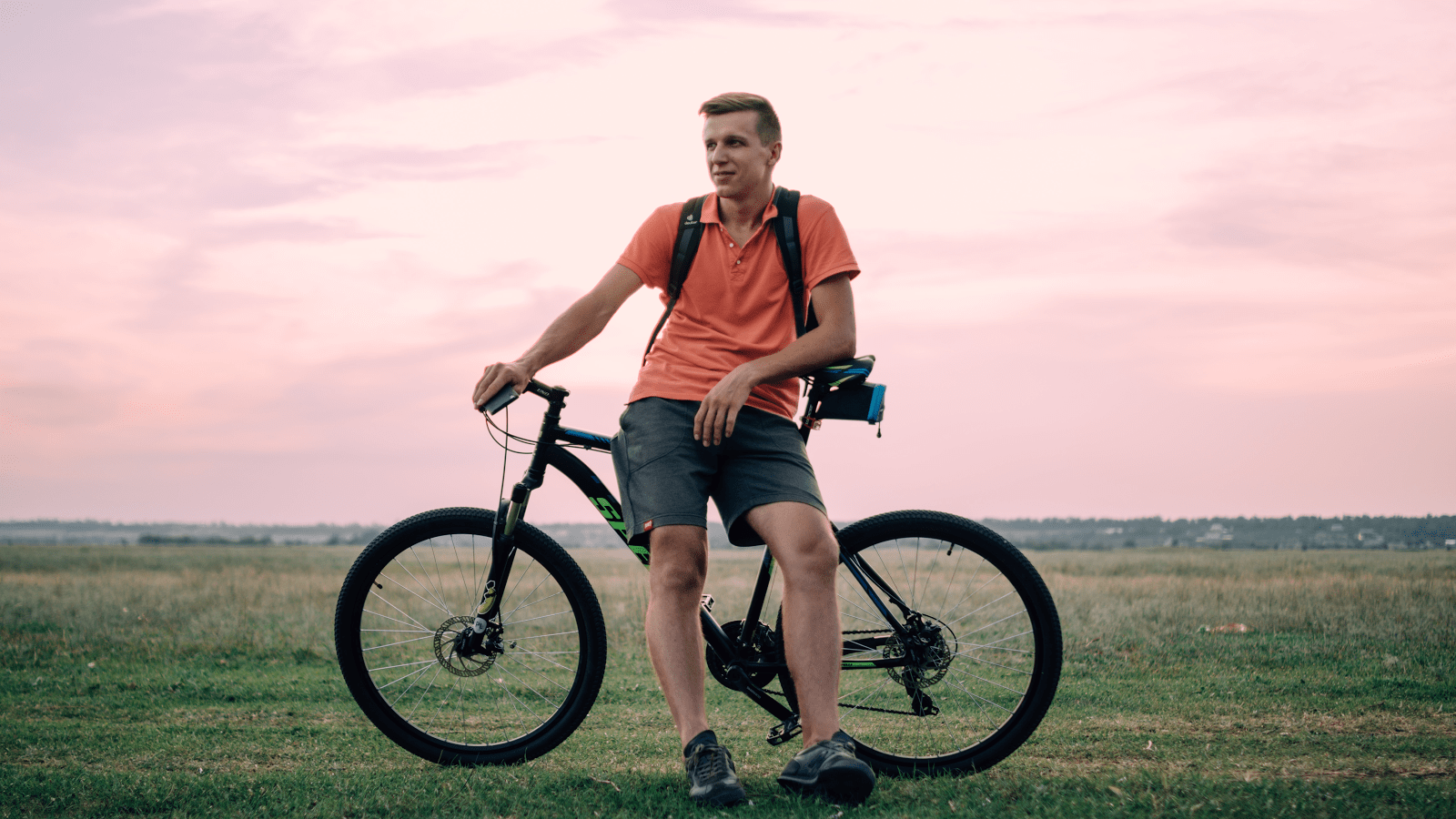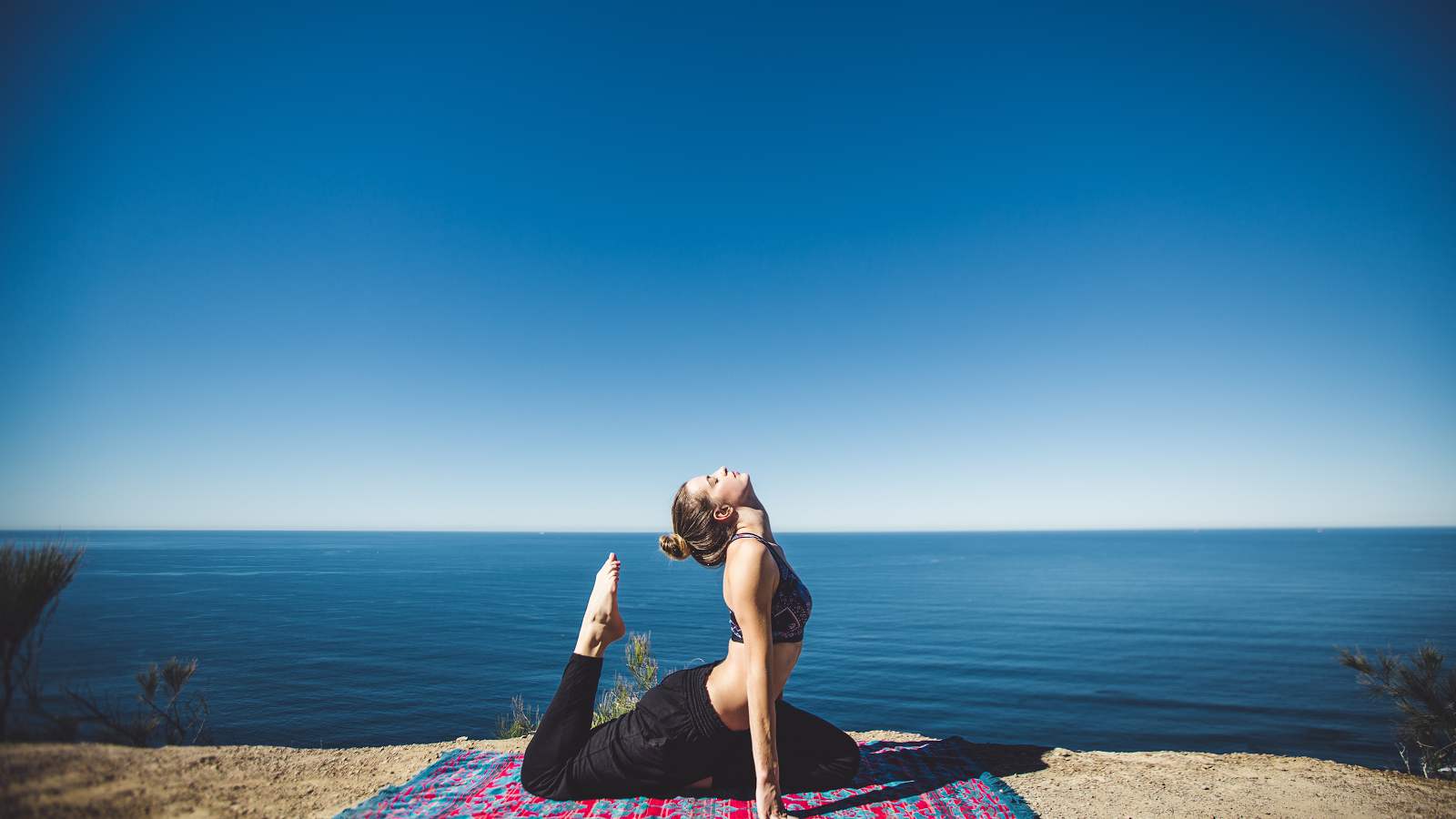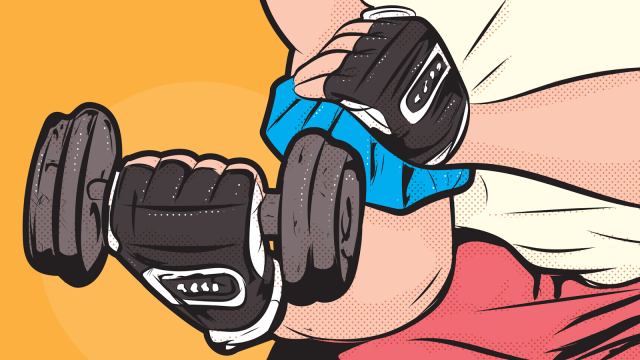The hardest part of sticking to a workout routine may be starting, but the second-hardest part is showing up to the next workout when everything feels like fire. You’re not off the hook, though! Staying home actually isn’t your best plan of action. Here’s what to do instead.
Illustration by Sam Woolley. Photos by Rodion Kutsaev, Matthew Kane, and Zach Betten.
Change Your Plans

The most important thing, for your safety, is that you don’t go ahead with a super hard workout if you’re seriously hurting. Pushing through the pain could lead you to injure yourself, sabotage your progress, or both.
Delayed onset muscle soreness (DOMS), the kind that starts the morning after a hard workout and can ache for days, is associated with muscle damage. That’s not entirely a bad thing: muscle damage leads to muscle growth. But while you’re sore, and often for a while afterward, your muscles are weaker and more vulnerable than they were before the workout.
Some people chase that achy feeling, and judge their workout as a success if they can really feel it the next day. But that’s counterproductive: tough exercise doesn’t always cause soreness, and soreness can be more of a warning sign than a cause for celebration. Put too much stress on those sore, vulnerable muscle fibres, and you could strain or tear a muscle.
I’ve strained muscles badly twice, both times when I had been exercising hard for days and pushing through the pain. I wanted to keep up with my workouts, but it turns out a torn muscle takes weeks to recover. I should have just taken it easy in the first place.
Even after the soreness subsides, your muscles may not be totally back to normal. Muscles can take weeks to return to full strength after a bout of severe DOMS. That’s where you’re sabotaging your own progress: if you show up to the gym with weak muscles, you can’t work as hard or make the gains you’d like. It’s better to slow down at the first sign of soreness, and recuperate a little.
But Don’t Skip Your Workout

With all those downsides to working out sore, you’re probably tempted to just stay home with some Netflix instead of taking your achy body back to the gym. But that has downsides, too. Beating the soreness for good comes from getting used to exercise, and you’ll never get used to it if you have to take a week off every time you get the idea to start again.
Even if you’re really hurting, you can probably do some exercise. Bodyweight squats instead of loading up a barbell, for example. Gentle yoga instead of plyometrics. A leisurely walk instead of a hike up a mountain.
Don’t think of this like a regular workout. Consider it a form of active rest, where you go through the motions but without a goal of physically challenging yourself.
If the workout that made you sore was the first (or second) of a new exercise program, the real value of an active rest session is in habit forming. You don’t want that first, ambitious day to be a fluke!
If you let soreness lead to laziness, it’s easy to skip a week or two of workouts before deciding to head back to the gym. By that point, you’ve let your small gain backslide, and you’re back to square one. You’ll just get sore again.
Imagine, for a moment, that you are twins. You and your counterpart both get crazy sore after Monday’s workout. On Wednesday morning, when your second workout is scheduled, your twin sleeps in. You put on your spandex anyway and go to the gym. You work through some light exercises while your twin sleeps, and you do the same thing again on Friday when you’re both feeling better but still not really up for a full workout. When next Monday rolls around and the soreness has subsided, which of you is more likely to actually show up at the gym? You are, of course. And thanks to the workouts you did during the week, you’re already getting used to this kind of exercise and are less likely to be sore going forward.
How to Deal With the Pain

There are a lot of myths surrounding muscle soreness, and one harsh truth: Nothing but time really works to make the soreness go away.
We ran down the evidence on common remedies in this explainer on muscle soreness. Things like ice packs and gentle stretching may make you feel better in the short term, so go ahead and do those things if they feel good. Don’t mistake them for remedies, though: after they’re over, your muscles are still just as damaged and painful as before.
A lot of us were taught that stretching helps soreness, and the deeper the stretch the better. That’s bogus, though. Intense stretching can make soreness worse, since you are pulling on that weakened muscle tissue and can strain it further. If you like stretching, a good alternative is foam rolling, which can give you that same “hurts so good” feeling. As a form of massage, it might even help your muscles recover — but the jury is still out on whether that’s really true.
When you’re sore is a good time to pay more attention to taking care of yourself. Anecdotally, I find sleep helps to deal with soreness: if I stay up late, I’m more likely to be sore the next day. Eating plenty of protein can’t hurt, either, since protein is important to building muscle. Vitamins are overrated, though: eat healthy, but don’t think that vitamin pills will help. They may even interfere with muscle recovery.
Pain relievers like ibuprofen are popular among athletes, but they aren’t helpful either. By the time you take enough to make a dent in the pain you’re feeling, you’re also taking enough to interfere with healing. Use pain relievers as a short term fix if you need them to get through the day, but don’t take any more than you need to.

Comments